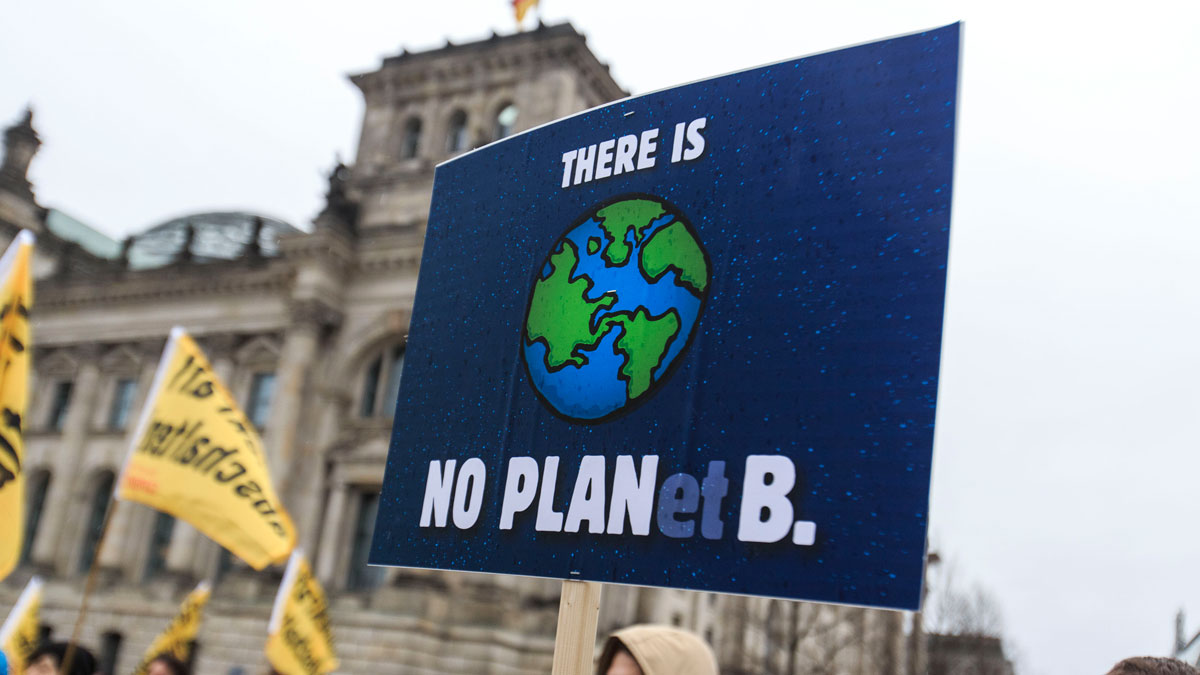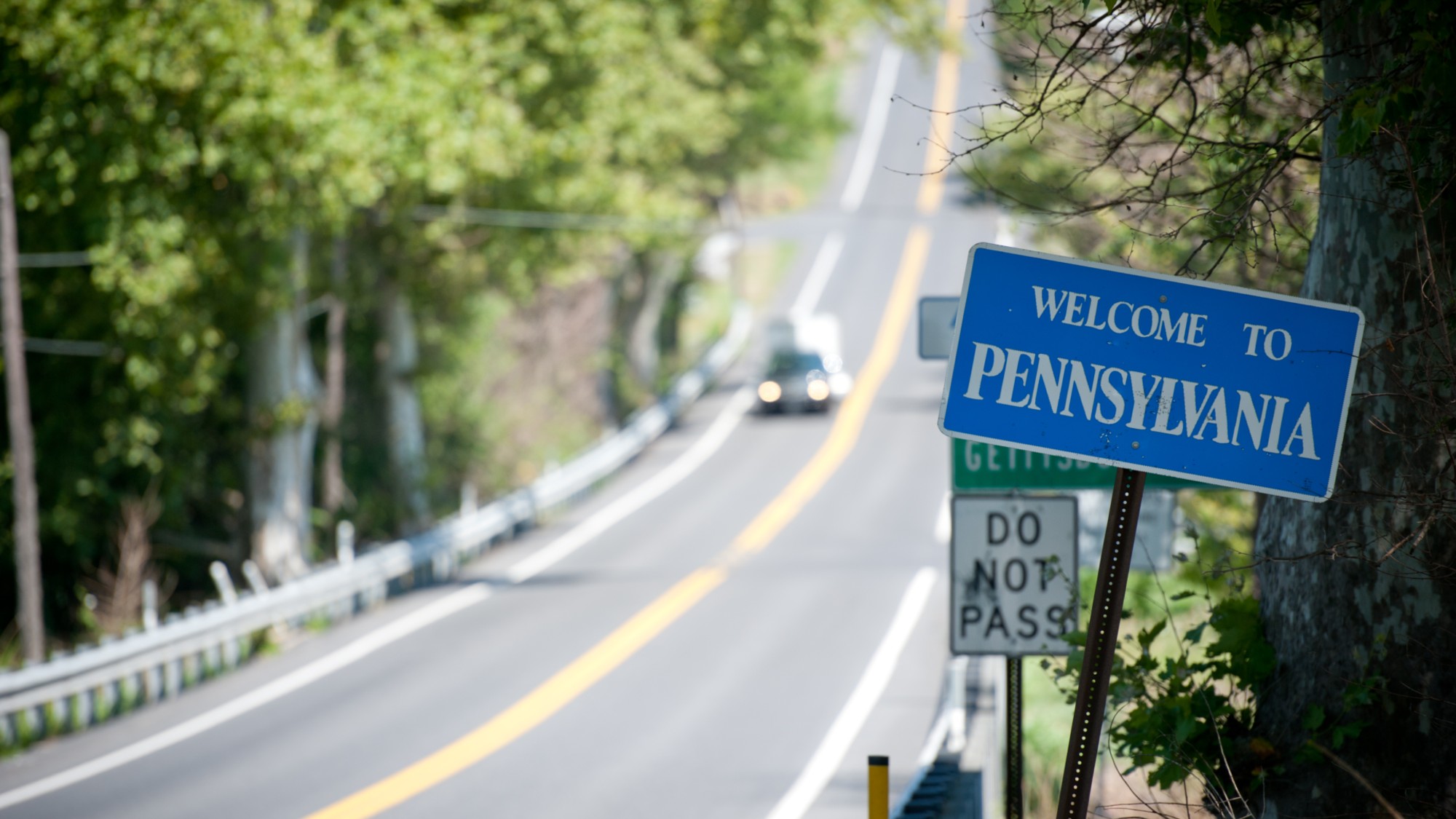What is a carbon footprint?
How each of us can take action to help tackle climate change

The issue of climate change has dominated headlines over the past year, with the rise of activist group Extinction Rebellion and regular “climate strikes” by millions of people worldwide.
Last week saw Swedish campaigner Greta Thunberg demanding urgent action by world leaders at the United Nations climate summit in New York, as the Amazon rainforst burns and fears grow about the increasing global threat posed by extreme heat, droughts and floods.
But while politicians are under pressure to enact meaningful legislation to tackle climate change, experts say that all of us need to make changes to limit our carbon footprints. So what exactly does that mean and what does it involve?
The Week
Escape your echo chamber. Get the facts behind the news, plus analysis from multiple perspectives.

Sign up for The Week's Free Newsletters
From our morning news briefing to a weekly Good News Newsletter, get the best of The Week delivered directly to your inbox.
From our morning news briefing to a weekly Good News Newsletter, get the best of The Week delivered directly to your inbox.
What is a carbon footprint?
A carbon footprint measures the total greenhouse gas emissions (such as carbon dioxide, or CO2) caused directly and indirectly by a person, organisation, event or product.
As Time For Change puts it, “when you drive a car, the engine burns fuel which creates a certain amount of CO2, depending on its fuel consumption and the driving distance”, and “when you heat your house with oil, gas or coal, then you also generate CO2”.
“Even if you heat your house with electricity, the generation of the electrical power may also have emitted a certain amount of CO2,” the blog continues. “When you buy food and goods, the production of the food and goods also emitted some quantities of CO2.”
A free daily email with the biggest news stories of the day – and the best features from TheWeek.com
–––––––––––––––––––––––––––––––For a round-up of the most important stories from around the world - and a concise, refreshing and balanced take on the week’s news agenda - try The Week magazine. Get your first six issues for £6–––––––––––––––––––––––––––––––
How is it calculated?
A carbon footprint is measured in tonnes of carbon dioxide equivalent (tCO2e), according to the London-based Carbon Trust.
“The carbon dioxide equivalent (CO2e) allows the different greenhouse gases to be compared on a like-for-like basis relative to one unit of CO2,” the advisory organisation adds.
Contrary to popular belief, carbon footprint refers to emissions of not only of carbon dioxide but also amethane (CH4), nitrous oxide (N2O), hydrofluorocarbons (HFCs), perfluorocarbons (PFCs) and sulphur hexafluoride (SF6).
CO2e is calculated by multiplying the emissions of each of the six greenhouse gases by its 100-year global warming potential.
The full footprints of businesses are the result of a much wider range of emissions sources than those of individuals, from direct use of fuels to indirect impacts such as employee travel or emissions from other organisations within the supply chain.
How can it be reduced?
“Nearly everything you do releases some amount of carbon into the atmosphere”, but how much is released depends on a “huge number of factors”, says Good Energy. Each of us can increase or decrease our carbon footprint through a wide range of basic everyday choices.
“For example, the food you buy has a carbon footprint attached to it”, in part resulting from the need to transport it to the shops - so “simply by purchasing local produce, you can reduce your food’s carbon footprint”.
As The Guardian reports, eating less meat and decreasing the size of the livestock industry also helps, by reducing the amount of methane created by cows and sheep. Adopting a vegan diet “might make as much as a 20% difference to your overall carbon impact, but simply cutting out beef will deliver a significant benefit on its own”, say the newspaper.
Decreasing the amount of gas/electric heating you use - along with increasing the amount of insulation in your home - can make a big difference too, while replacing old boilers with newer, more energy-efficient ones will also reduce wastage.
Air travel is usually the largest component of the carbon footprint of frequent flyers. A single return flight from London to New York – including the complicated effects on the high atmosphere – contributes to almost a quarter of the average person’s annual emissions. The easiest way to make a big difference is to go by train or not take as many flights.
Switching to LED (light-emitting diode) lightbulbs, using appliances less often, driving less and buying fewer exported goods will also help.
However, “although personal responsibility is important”, systemic change is “the only way that we will successfully solve this problem, which means holding our governments accountable”, says The Phuket News.
Writing to your local government representative to demand action is one way to do that.
-
 3 ways to reduce the cost of owning a car
3 ways to reduce the cost of owning a carthe explainer Despite the rising expense of auto insurance premiums and repairs, there are ways to save
-
 DOJ targets ‘disparate impact’ avenues of discrimination protections
DOJ targets ‘disparate impact’ avenues of discrimination protectionsIN THE SPOTLIGHT By focusing solely on ‘intentional discrimination,’ the Justice Department risks allowing more subtle forms of bias to proliferate
-
 ‘Consistency at the ballot box isn’t nearly as meaningful to many voters here’
‘Consistency at the ballot box isn’t nearly as meaningful to many voters here’Instant Opinion Opinion, comment and editorials of the day
-
 How Bulgaria's government fell amid mass protests
How Bulgaria's government fell amid mass protestsThe Explainer The country’s prime minister resigned as part of the fallout
-
 Femicide: Italy’s newest crime
Femicide: Italy’s newest crimeThe Explainer Landmark law to criminalise murder of a woman as an ‘act of hatred’ or ‘subjugation’ but critics say Italy is still deeply patriarchal
-
 Brazil’s Bolsonaro behind bars after appeals run out
Brazil’s Bolsonaro behind bars after appeals run outSpeed Read He will serve 27 years in prison
-
 Americans traveling abroad face renewed criticism in the Trump era
Americans traveling abroad face renewed criticism in the Trump eraThe Explainer Some of Trump’s behavior has Americans being questioned
-
 Cop30: is the UN climate summit over before it begins?
Cop30: is the UN climate summit over before it begins?Today’s Big Question Trump administration will not send any high-level representatives, while most nations failed to submit updated plans for cutting greenhouse gas emissions
-
 Nigeria confused by Trump invasion threat
Nigeria confused by Trump invasion threatSpeed Read Trump has claimed the country is persecuting Christians
-
 Sanae Takaichi: Japan’s Iron Lady set to be the country’s first woman prime minister
Sanae Takaichi: Japan’s Iron Lady set to be the country’s first woman prime ministerIn the Spotlight Takaichi is a member of Japan’s conservative, nationalist Liberal Democratic Party
-
 Israel intercepts 2nd Gaza aid flotilla in a week
Israel intercepts 2nd Gaza aid flotilla in a weekSpeed Read The Israeli military intercepted a flotilla of nine boats with 145 activists aboard along with medical and food aid